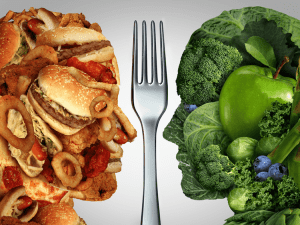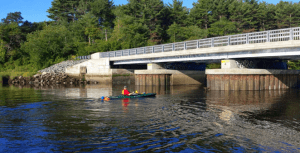The abortion topic is hard to dissect from an eco-feminism perspective, because you could make an argument that both pro-choice and pro-life stances aren’t in line with the beliefs of the movement. We have heard a lot from the pro-choice camps advocating for abortion rights and how they grant women more freedom that men commonly enjoy. With that in mind, any policy that restricts their decisions on abortion conflicts with eco-feminism ideals because it limits their freedom and ability to catch up to men, who enjoy a power dynamic that favors their interests. But if we consider the power dynamic of the individuals involved in abortion, being the potential mom and the unborn child, the woman’s interests are the only ones being considered in instances of abortion, aside from those that are done to spare a child from birth defects. Between the woman and the unborn child, the woman is in the position of power as the fate of the child is up to her. The weight of each party’s interests is not necessarily equal, but in an eco-feminist mindset we must not view the issue based just on how it can benefit those who are in a position of power, in this case the woman. Hawkins makes a compelling argument to consider population control via abortion in addition to birth control, and while I agree with the need to sustainably exist moving forward, I think the abortion topic deserves recognition beyond its global environmental impact
If you evaluate the different opinions on the issue, you find yourself with the pro-life and the pro-choice camps. This would imply that they can inversely be referred to as the anti-choice and anti-life camps. In order to fairly incorporate opposing perspectives in reaching a conclusion to this debate, we must at least consider their viewpoints and the reasons they justify them. We must view abortion advocates as more than just those wishing death on unborn children, as well as those who do not want abortion as more than just those who deprive women of rights. Pro-life advocates reason for their beliefs is quite simple, and that’s that they are pro-life, a life which they view as a priority to protect over rights of the mother. The premise of their being a life at stake trumps any other consideration, if the fetus is being determined to have that right to life. For that reason, it is not in the best interest for feminists to reason with pro-life activists that abortion restrictions rob woman of their right to make decisions regarding their own bodies, since that is not what is the priority in the eyes of those who differ. In their opinion, what the fetus will lose, being life, trumps what the mother has to gain, which is independence. You cannot successfully convince them that the death is justifiable because of how it would benefit the oppressor because it does not change anything about the state of the oppressed. For that reason, it is important to consider the rights that a fetus has to life, since that is the most pressing concern to pro-life advocates, whereas the ripple effects of the decision like women’s flexibility in career paths, is of lesser concern.
The articles for this section view the abortion issue with different perspectives, with Hawkins focusing on the environmental implications and Jessica Valenti on women’s rights. I believe the most relevant article for settling the debate that we read though is the internet encyclopedia of Philosophy’s analysis of Abortion. Instead of listing all the positives of abortion, the analysis instead tries to dismantle the argument against abortion, which is that killing human life forms is wrong and the fetus is a human life from so therefore abortion is wrong. It then goes on to evaluate what rights a human life form such as a fetus has, and if at any point during the pregnancy the fetus could develop into a human with rights. There is a lot of common ground between many involved in the debate, as many pro-choice advocates concede that fetuses that make it into the third trimester have a right to live. The only difference is that the pro-lifers believe that there isn’t a breaking point where it suddenly becomes wrong to abort. Since both camps can agree on the rights of the unborn after they have reached the breaking point, the validity of the pro-choice movement to nay-sayers rests on justifying such breaking point, as that is where the disagreement stems. It is not up for debate whether or not it is morally acceptable to kill a person, so the nature of the argument must be to distinguish a fetus from a person. The internet Encyclopedia of Philosophy addresses what is pressing to the pro-life advocates by dissecting the designation of rights and moral agreements regarding unborn children, and so I think it’s the most effective and relevant point of discussion for the topic. A strong case for legitimate breaking point is very important as it would explain why abortion is justifiable up to a certain point and highlight the difference between appropriate and inappropriate circumstances, and the Encyclopedia of Philosophy recognizes it’s significance. “If there is no morally significant break, then the fetus has the same high status as a newborn, or the new born has the same low status as a fetus” (Encyclopedia of Philosophy). Pro-life advocates currently believe the former and don’t differentiate between a fetus and newborn, so evidence of breaking point would lead them to consider why a fetus’s life could be expendable when we almost collectively agree that a newborn is not. To do that though, you must differentiate between a fetus not worthy of personhood and one that is. I think in this instance it’s more effective to attempt to poke holes in the oppositions logic of trying to defend the unborn as a person when it may not worthy of personhood than to try to persuade them with the environmental positives of not doing so, which aren’t related to the life that their opinion is centered around.
The existence of a point in the pregnancy where a fetus transforms into a person and gains the right to life is hard to determine, since personhood is not easily defined. The Encyclopedia of Philosophy references Mary Anne Warren who considers the fetus to be worthy of personhood when it gains certain but not necessarily all abilities, specifically consciousness and sensitivity to pain, reasoning, self-motivated movement, communication, and self-consciousness, with an emphasis on the first three. The Encyclopedia goes on to state that the first brain activities are discernible after about 7 weeks, but concluded that just the ability to feel pain isn’t enough to necessarily consider a fetus a human. While abortions may occur up to 24 weeks into a pregnancy, the time between the start of brain activity and a later term abortion is important to consider from an eco-feminism standpoint, because if the pain is valid than it should be recognized and attempted to avoid for the same reason many are against slaughtering animals needlessly. Even though animals are not recognized people, their pain does not come lightly, and neither should fetuses. The Charlotte Lozier Institute released a fact sheet relating to fetal pain and added that at around 7 weeks’ sensory receptors for pain start developing around the mouth, and as early as 8 weeks the fetus reacts to invasive procedures. As the baby continues to develop it becomes increasingly aware of pain, becoming sensitive even before the 20-week mark when connections from the spinal cord to areas of the brain the sense pain are nearly complete. Going off a reference from their fact sheet, “From the 15th week of gestation onward, “the fetus is extremely sensitive to painful stimuli, and that this fact should be taken into account when performing invasive medical procedures on the fetus. It is necessary to apply adequate analgesia to prevent the suffering of the fetus”” (Charlotte Lozier Institute). Halfway through the stretch from 7 to 24 weeks, the fetus is already vulnerable to suffering, and requires painkillers to offset any invasive procedure. While medication can fortunately prevent the suffering of the fetus, the recognition of fetuses’ ability to be extremely susceptible to pain at such an early stage in the pregnancy illustrates the importance of the unborn in the abortion scenario and that it is not something that can be overlooked when forming a stance on the issue. Being able to prevent the fetus from suffering during an abortion is favorable from an Eco-feminism perspective, however its ability to feel pain so early on might suggest that personhood is achieved sooner rather than later in the pregnancy, something that cannot be clearly assessed but rather inferred based off abilities observed according to Warren, many of which cannot be easily detected.
I agree with Hawkins urgency to consider the human impact on the planet, especially considering that the projected upper threshold of a sustainable number of world inhabitants is fast approaching at only 10-12 billion occupants. Hawkins is right in saying that abortions would slow this problem. Hawkins claims that abortion serves a significant role as countries transition into more developed societies to help limit the surge in population as death rates decline, but before birth rates start their decline. As nations qualities of life are improving and people are living longer with less need for a larger family to get by, people prefer smaller families. In her passage, Hawkins references Japan and South Korea who had recently made the transition into becoming more developed nations. “The abortion rates in Japan and South Korea, for example, which underwent rapid transitions to a low birth rate during this century, rose when fertility was declining most sharply, then fell dramatically as the rate of contraceptive use gained” (Hawkins). Abortion serves as essentially a Band-Aid to unwanted population growth for developing natures until they can become successful in utilizing birth control, which is a more logical approach. Abortion fixes the problem of an unwanted pregnancy, whilst birth control measures prevent the problem from occurring in the first place. Preventative health care is usually less costly than corrective healthcare, so it makes sense to me to put an emphasis on birth control, especially one and done type methods like an IUD. A single procedure could prevent unwanted pregnancy for 5 years. Hawkins notes that developed countries cause more environmental damage than less developed ones, who unfortunately suffer more because of the damage. “Estimates of the consumption of world resources and stress to the global environment generated per capita for citizens of the industrialized nations relative to those of the poorer countries have ranged from fifteen to more than one hundred times as great” (Hawkins). Hawkins markets abortion to developing nations even though it is not their population that is causing significant environmental harm because decreasing birth rate while they are developing will result in a lower population by the time their environmentally degrading lifestyle comes around down the road. While any reduction in population eases the strain we put on our planet, the problem isn’t entirely just the number of us here but also the way we treat the Earth. There isn’t a need for abortion for ecological concerns, there is a need to be collectively sustainable, and abortion is just one method of reducing our harm inflicted, but is certainly not the end all be all.
Hawkins ends her argument addressing how abortion could be viewed as negating the core values of eco-feminism by interfering with the natural reproduction and development of humans, but then goes on to explain how we need to change the way we evaluate human’s role on the planet and to essentially own up to the unattended consequences of rapid population growth. “At the present time, recognition of our connectedness with all other life on the planet reinforces the need for abortion” (Hawkins). Her explanation for looking beyond just the impact the decision to have an abortion has on a family level is that every person on the planet makes an impact, and we must be cognizant of the damage we are doing. Hawkins view on abortion is utilitarian because it considers the absence of the unborn child’s life a positive in relation to the Earth’s sustainability, completely negating the impact at the personal level for better or worse. Viewing each life as a statistical factor is important for making global assessments, but cannot be the only perspective we have as it negates individual rights.
I agree with Hawkins desire to protect the future of our planet and future generations, and the perspective that she offers is an important one to consider. Another perspective we must consider is also the impact on women’s rights, which Jessica Valenti touches on in her article Abortion isn’t about the right to privacy. It’s about women’s right to equality. In this Jessica notes the independence woman gained from having more control over their own reproduction because of birth control, something that she wants to be at the forefront of the movement for abortion. “Going on pro-choice offense also forces those who identify as pro-choice to stop equivocating about the morality of abortion and take a more hardline approach to our rights” (Valenti). There is indeed a need to address the issue and advocate for rights and liberties, but we can’t get tunnel vision and not appreciate the broad scope of an extremely controversial and emotional topic. There needs to be respectful and fair deliberation involving the many important viewpoints that have been mentioned, whilst also an attempt to understand the oppositions reasoning and what that is rooted on, as well as the common ground between the pro-life and pro-choice sides. Just as Valenti does, Hawkins offers us a valuable perspective to incorporate into the issue at large, however a conclusion cannot be derived so simply. Pieces like the Encyclopedia of Philosophy’s analysis of abortion help as they process many perspectives thoroughly, but still a clear, informed enough conclusion is elusive to me, as there are unanswered questions as to what is really a person and what our moral obligations really are. I agree with the movement to empower women and to respect the planet, but I also cannot undervalue the delicacy of our notion of personhood and our moral agreements to how to protect that. I am uninformed enough to not be assertive enough to have a definitive stance on something so incredibly critical.
Fact Sheet: Science of Fetal Pain






